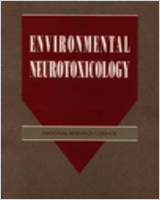From: 1, Introduction: Defining the Problem of Neurotoxicity

Environmental Neurotoxicology.
National Research Council (US) Committee on Neurotoxicology and Models for Assessing Risk.
Washington (DC): National Academies Press (US); 1992.
Copyright © National Academy of Sciences.
NCBI Bookshelf. A service of the National Library of Medicine, National Institutes of Health.